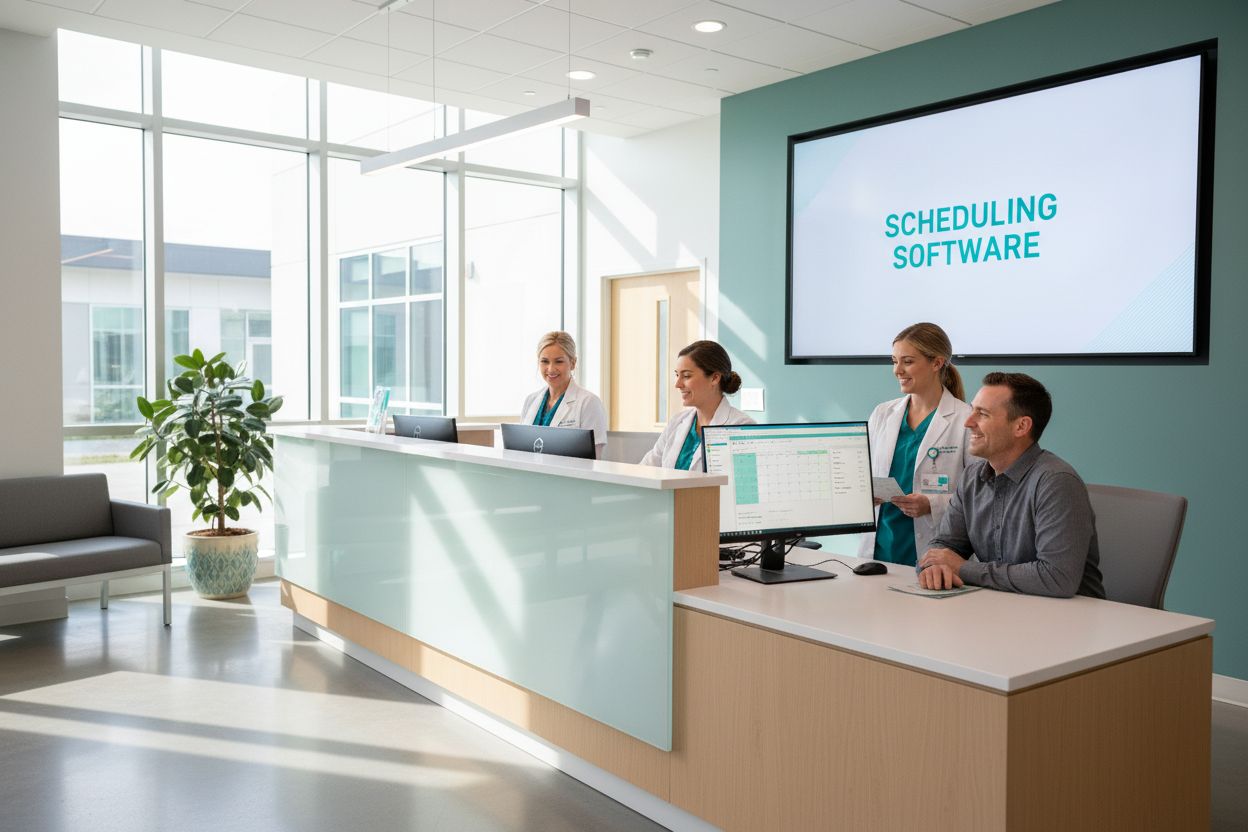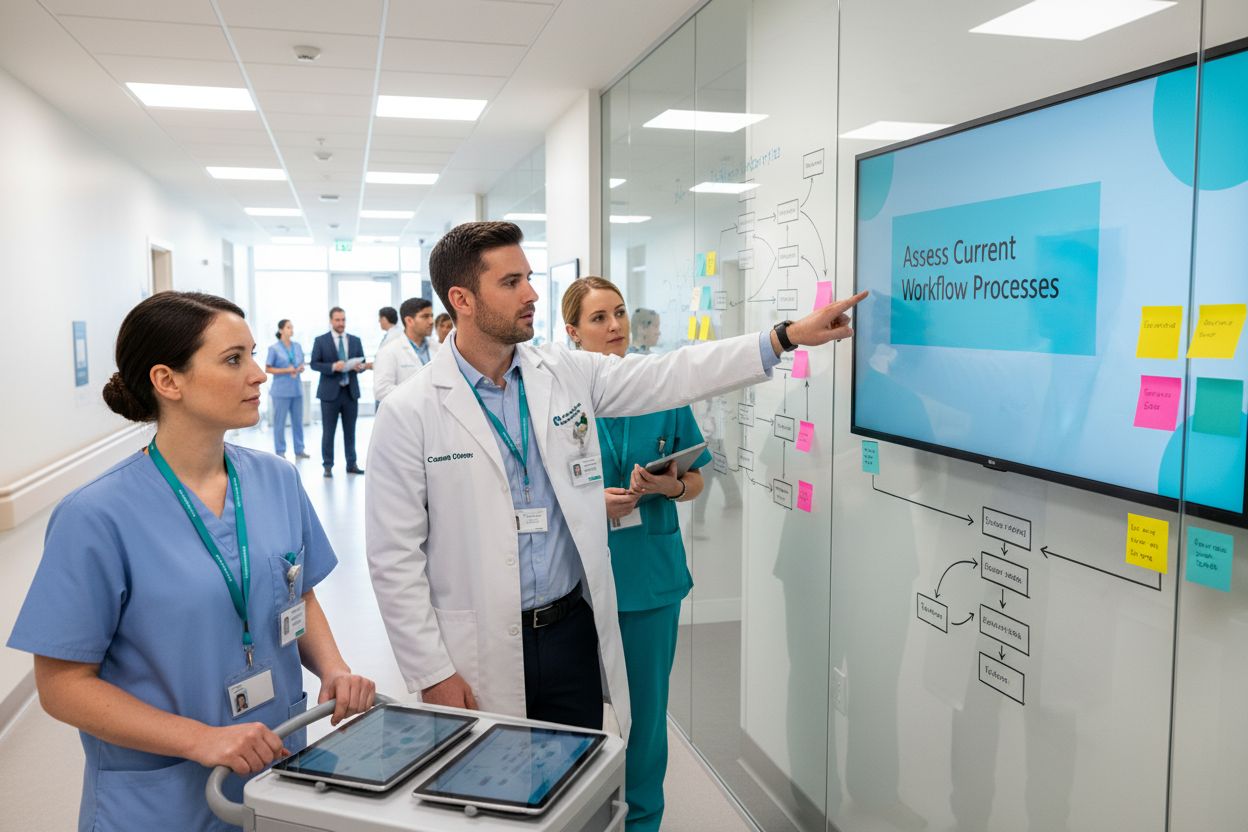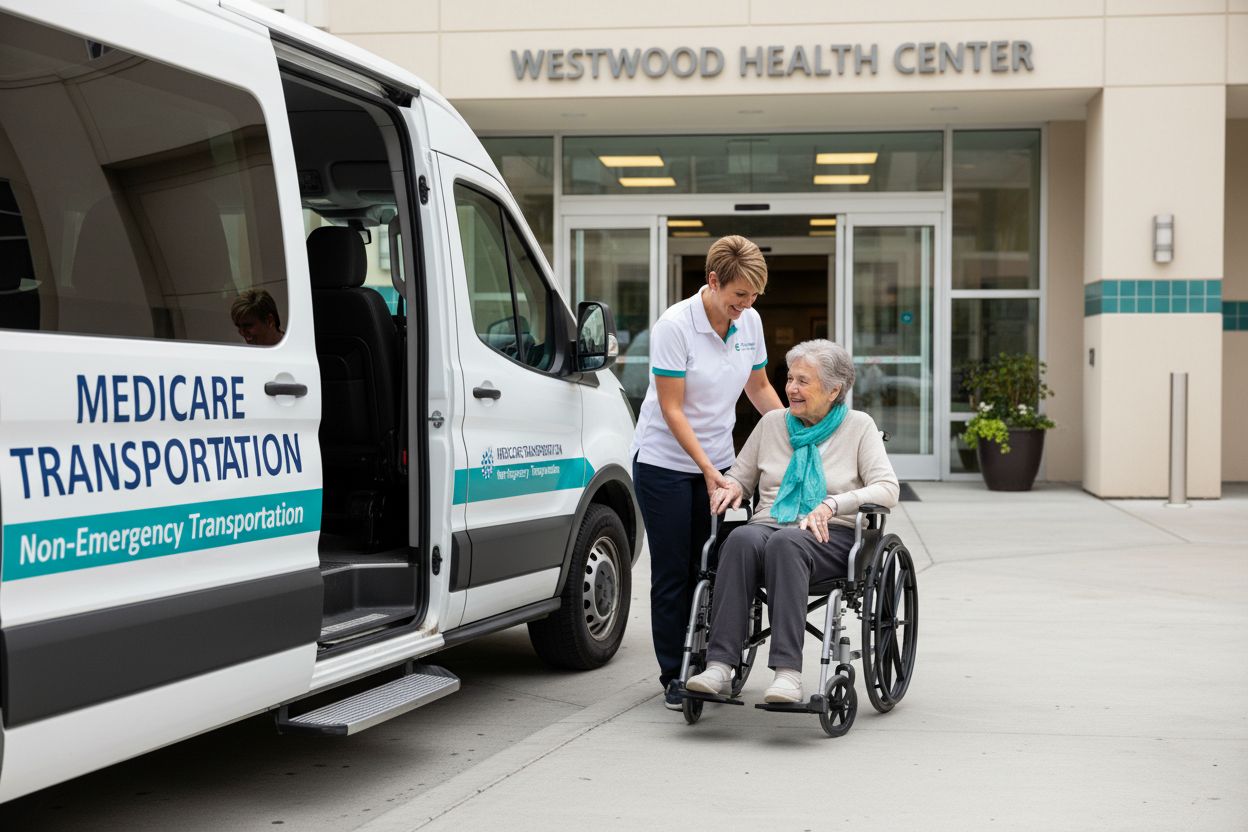Understanding Medical Transportation Providers: Key Insights
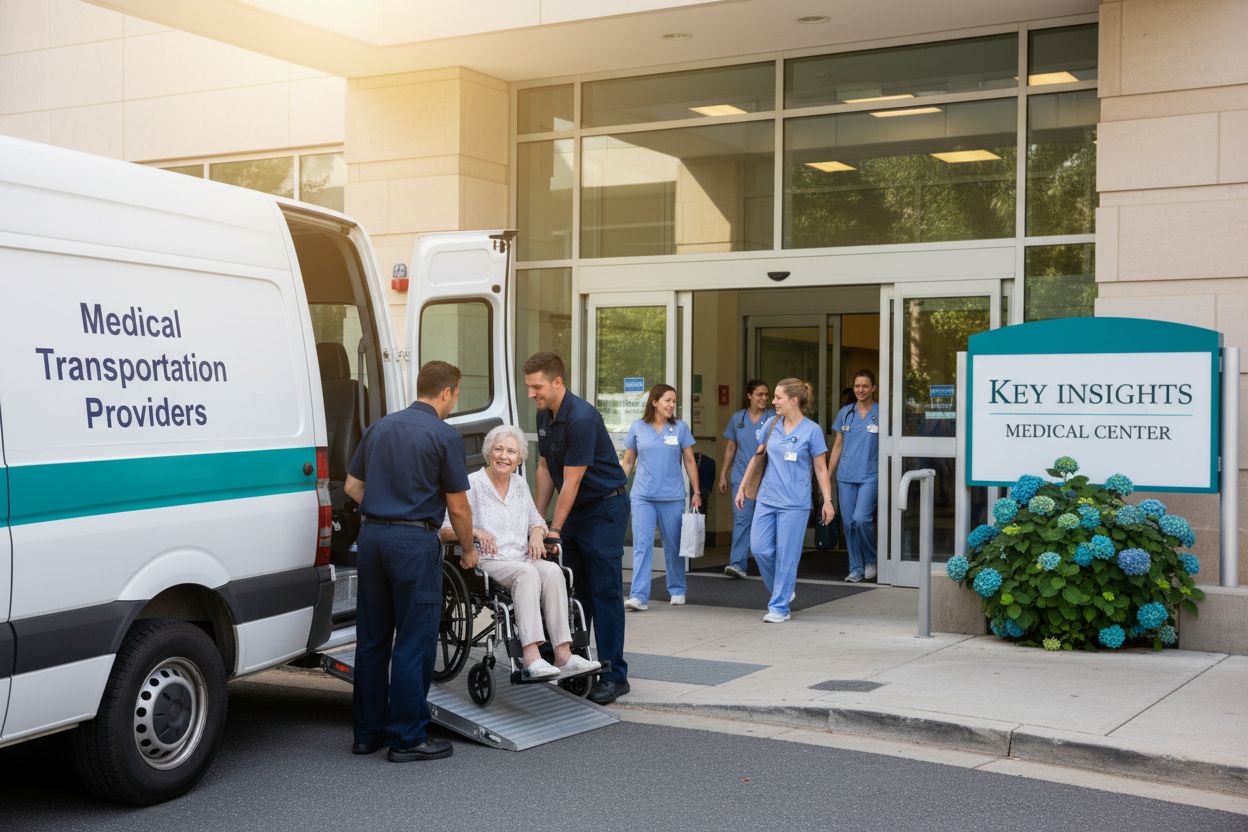
Medical transportation plays a bigger role in healthcare than most people realize. More than 3.6 million Americans miss or delay care every year simply because they cannot get a ride to their medical appointments. That sounds like a logistical glitch. Actually, it is a massive public health crisis that stretches far beyond simple transportation and shapes the quality of care millions receive.
Table of Contents
- What Are Medical Transportation Providers?
- The Importance of Medical Transportation in Healthcare
- How Medical Transportation Works: Services and Operations
- Key Concepts in Medical Transportation and Their Applications
- The Future of Medical Transportation Providers
Quick Summary
| Takeaway | Explanation |
|---|---|
| Medical transportation is vital for patient access | It ensures patients with mobility challenges reach medical facilities and receive necessary care. |
| Providers offer various transportation services | Services include emergency transport, non-emergency transport, and long-distance transfers tailored to patient needs. |
| Accessibility reduces healthcare disparities | Effective medical transport eliminates barriers, helping vulnerable populations maintain healthcare continuity and adherence to treatment. |
| Operational efficiency is crucial | Providers must optimize routes, train staff, and ensure compliance with regulations for safe and reliable service delivery. |
| Technology will transform future services | Innovations like AI and telemedicine integration will enhance operational efficiency and broaden healthcare access for underserved communities. |
What Are Medical Transportation Providers?
Medical transportation providers are specialized service organizations that facilitate patient mobility and healthcare access by transporting individuals who cannot independently travel to medical facilities. Medical transportation services play a critical role in ensuring patients receive timely medical care, particularly for those with mobility challenges, chronic conditions, or limited transportation resources.
Types of Medical Transportation Services
Medical transportation providers offer diverse transportation solutions tailored to different patient needs and medical requirements
Below is a comparison of the main types of medical transportation services provided, highlighting their specific features and targeted patient needs.
| Type of Service | Purpose | Typical Patients | Key Features |
|---|---|---|---|
| Emergency Medical Transportation | Rapid response for urgent cases | Critically ill or injured individuals | Ambulance, medical staff |
| Non-Emergency Medical Transportation | Routine access to medical appointments | Mobility-challenged, elderly, disabled | Wheelchair vans, sedans |
| Long-Distance Medical Transport | Transfers between facilities or for specialized care | Patients needing care far from home | Specialized vehicles, support |
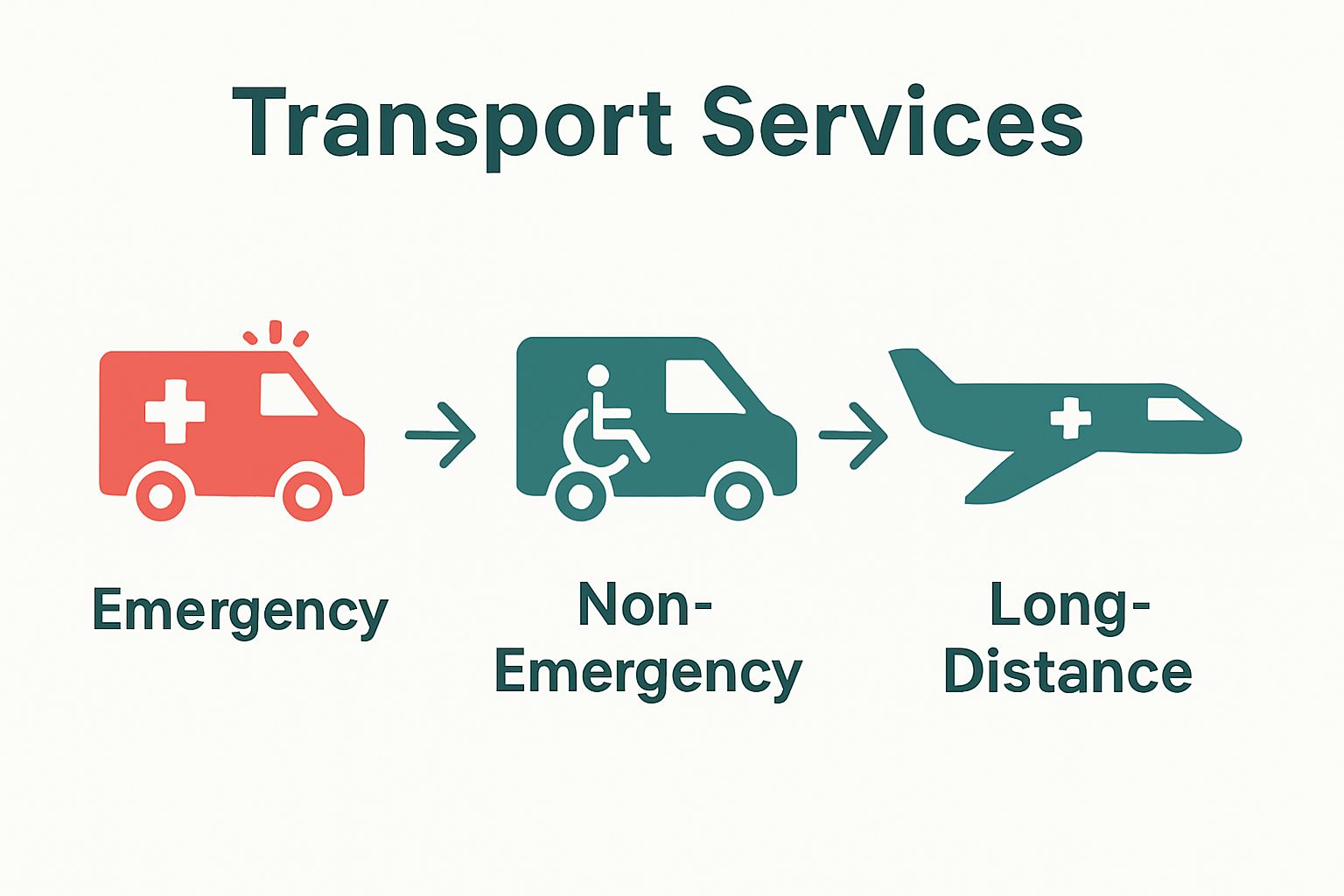
:
- Emergency Medical Transportation: Ambulance services that provide urgent medical transport for critical patients requiring immediate medical intervention
- Non-Emergency Medical Transportation (NEMT): Wheelchair-accessible vans, sedans, and specialized vehicles for patients needing routine medical appointments
- Long-Distance Medical Transport: Services for patients requiring transportation between healthcare facilities or for specialized treatments
Key Operational Components
Successful medical transportation providers integrate multiple operational components to ensure patient safety and service reliability. These include professional medical staff training, vehicle maintenance, route optimization, and compliance with healthcare transportation regulations.
The core mission of medical transportation providers extends beyond simple transportation. They serve as a critical link in the healthcare ecosystem, enabling patients with limited mobility or transportation resources to access essential medical services. By offering specialized vehicles, trained personnel, and patient-centered approaches, these providers significantly contribute to improving healthcare accessibility and patient outcomes.
This table outlines the fundamental operational components that medical transportation providers must manage to ensure safe, reliable service for patients.
| Operational Component | Description |
|---|---|
| Medical Staff Training | Prepares personnel for patient care and in-transit emergencies |
| Vehicle Maintenance | Ensures vehicles are safe, reliable, and properly equipped |
| Route Optimization | Reduces travel time and improves service efficiency |
| Regulatory Compliance | Meets state and federal healthcare transportation standards |
| Patient-Centered Approaches | Addresses individual accessibility and care requirements |
Learn more about medical transport companies and their evolving roles to understand how these critical services continue to transform patient logistics and healthcare delivery.
The Importance of Medical Transportation in Healthcare
Medical transportation serves as a critical infrastructure component within healthcare systems, enabling patient access, continuity of care, and improved health outcomes for vulnerable populations. Research from the CDC indicates that transportation barriers significantly impact healthcare accessibility, particularly for elderly, disabled, and low-income communities.
Healthcare Access and Equity
Medical transportation plays a fundamental role in addressing healthcare disparities by providing essential mobility solutions for patients who cannot independently travel. The significance extends beyond simple transportation, representing a vital lifeline that connects patients with necessary medical services.
Key implications of effective medical transportation include:
- Reduced Healthcare Barriers: Eliminates transportation obstacles preventing patients from accessing medical appointments
- Improved Treatment Adherence: Enables consistent medical care and follow-up treatments
- Enhanced Patient Outcomes: Supports continuous medical management for chronic conditions
Economic and Social Impact
Beyond individual patient benefits, medical transportation generates broader societal advantages. By facilitating healthcare access, these services help reduce overall healthcare costs, minimize emergency room utilization, and support preventative care strategies.
Healthcare systems increasingly recognize medical transportation as a strategic investment rather than an auxiliary service. Learn more about reliable medical transportation solutions that transform patient care approaches and address complex mobility challenges.
Ultimately, medical transportation represents more than a logistical service. It embodies a critical healthcare intervention that bridges gaps, supports vulnerable populations, and promotes equitable access to essential medical care.
How Medical Transportation Works: Services and Operations
Medical transportation operates through a complex network of coordinated services, designed to meet diverse patient mobility needs while maintaining safety and efficiency. According to EMS regulatory guidelines, these services must adhere to strict operational standards that ensure patient care and transportation quality.
Service Request and Coordination
The medical transportation process begins with a comprehensive service request mechanism. Healthcare providers, patients, or insurance companies initiate transportation requests based on specific medical requirements. These requests are carefully evaluated to determine:
- Vehicle Type: Matching appropriate transportation mode to patient needs
- Medical Equipment Requirements: Ensuring necessary medical support during transit
- Patient Mobility Limitations: Addressing specific accessibility challenges
Operational Workflow and Patient Management
Medical transportation providers implement robust operational workflows that prioritize patient safety and efficient service delivery.
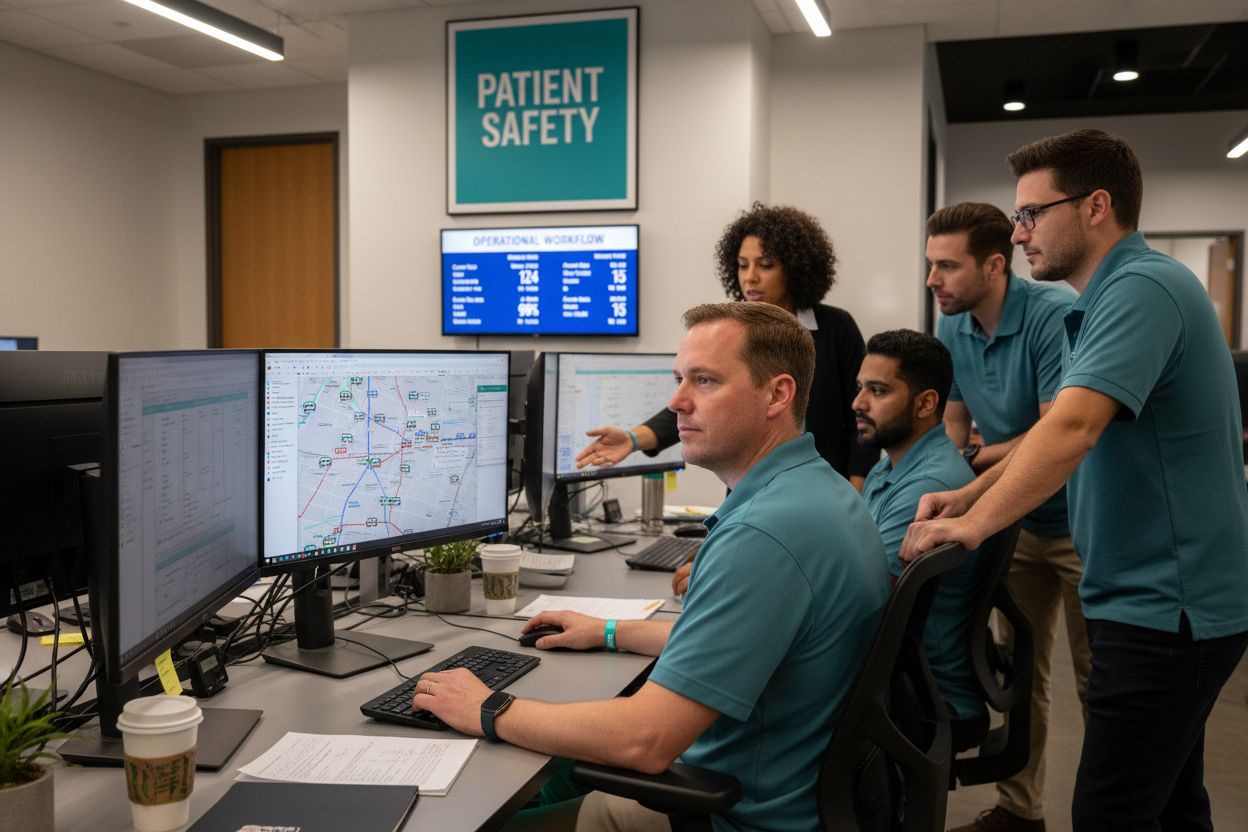
This includes:
- Dispatch Management: Coordinating vehicle assignments and route optimization
- Medical Personnel Preparation: Ensuring staff are trained for potential patient care scenarios
- Real-Time Tracking: Monitoring vehicle location and patient transit conditions
Unique challenges such as patient medical conditions, geographical constraints, and time-sensitive medical appointments require sophisticated logistical planning. Providers must balance medical necessity with operational efficiency, often integrating advanced technologies to streamline transportation services.
Explore more about medical transport companies and their operational strategies to gain deeper insights into this critical healthcare infrastructure. The intricate process of medical transportation represents a sophisticated blend of healthcare expertise, logistical management, and patient-centered service delivery.
Key Concepts in Medical Transportation and Their Applications
Medical transportation encompasses complex principles that extend far beyond simple patient movement, integrating healthcare, logistics, and patient safety considerations. Research in medical mobility systems highlights the intricate frameworks that guide effective medical transportation strategies.
Fundamental Operational Principles
Medical transportation operates on several core conceptual foundations that ensure comprehensive and patient-centered service delivery. These foundational concepts represent the critical infrastructure supporting medical mobility:
- Medical Necessity: Determining appropriate transportation based on patient health requirements
- Patient Safety: Implementing protocols that protect patient well-being during transit
- Operational Efficiency: Optimizing resources and minimizing transit time
Specialized Service Applications
The application of medical transportation concepts varies across different healthcare contexts, requiring nuanced approaches to patient mobility. Each transportation scenario demands sophisticated understanding of patient needs, medical conditions, and logistical constraints.
Healthcare systems increasingly recognize that medical transportation is not a uniform service but a dynamic, adaptive mechanism tailored to individual patient requirements. Providers must continuously evolve their strategies to address emerging medical transportation challenges.
Learn more about medical transportation service strategies that demonstrate the complex interplay between healthcare delivery and patient mobility solutions. The field represents a critical intersection of medical expertise, technological innovation, and compassionate patient care.
The Future of Medical Transportation Providers
Medical transportation is undergoing a transformative evolution, driven by technological innovations, changing healthcare dynamics, and increasing patient mobility needs. Emerging research in healthcare mobility suggests radical shifts in how medical transportation services will be conceptualized and delivered.
Technological Integration and Innovation
Future medical transportation providers will leverage cutting-edge technologies to enhance service quality and operational efficiency. Key technological developments include:
- Artificial Intelligence: Optimizing route planning and predicting patient transportation requirements
- Telemedicine Connectivity: Integrating real-time medical monitoring during transit
- Advanced Vehicle Technologies: Incorporating autonomous and electric vehicle capabilities
Expanding Healthcare Access and Equity
Medical transportation is poised to become a critical mechanism for addressing healthcare disparities. Providers are developing strategies to extend services to underserved and rural communities, transforming transportation from a logistical service to a fundamental healthcare access solution.
The convergence of digital technologies, data analytics, and patient-centered design will reshape medical transportation. Providers must anticipate evolving healthcare needs, integrate sophisticated technological solutions, and maintain a commitment to compassionate, efficient patient care.
Explore the comprehensive future of healthcare delivery to understand how medical transportation will play a pivotal role in transforming healthcare accessibility and patient experience.
Transform Patient Logistics with VectorCare: Modern Solutions for Medical Transportation Providers
Navigating medical transportation is complex. As highlighted in this article, providers must overcome challenges like operational inefficiencies, fragmented communications, and gaps in patient mobility that seriously impact outcomes. The need for real-time updates, automated workflows, and integrated management is urgent for anyone looking to streamline coordination and deliver better care. If you are struggling with outdated systems, delays, or missed appointments, you are not alone. Many organizations face the same hurdles when trying to optimize patient transportation and care logistics.
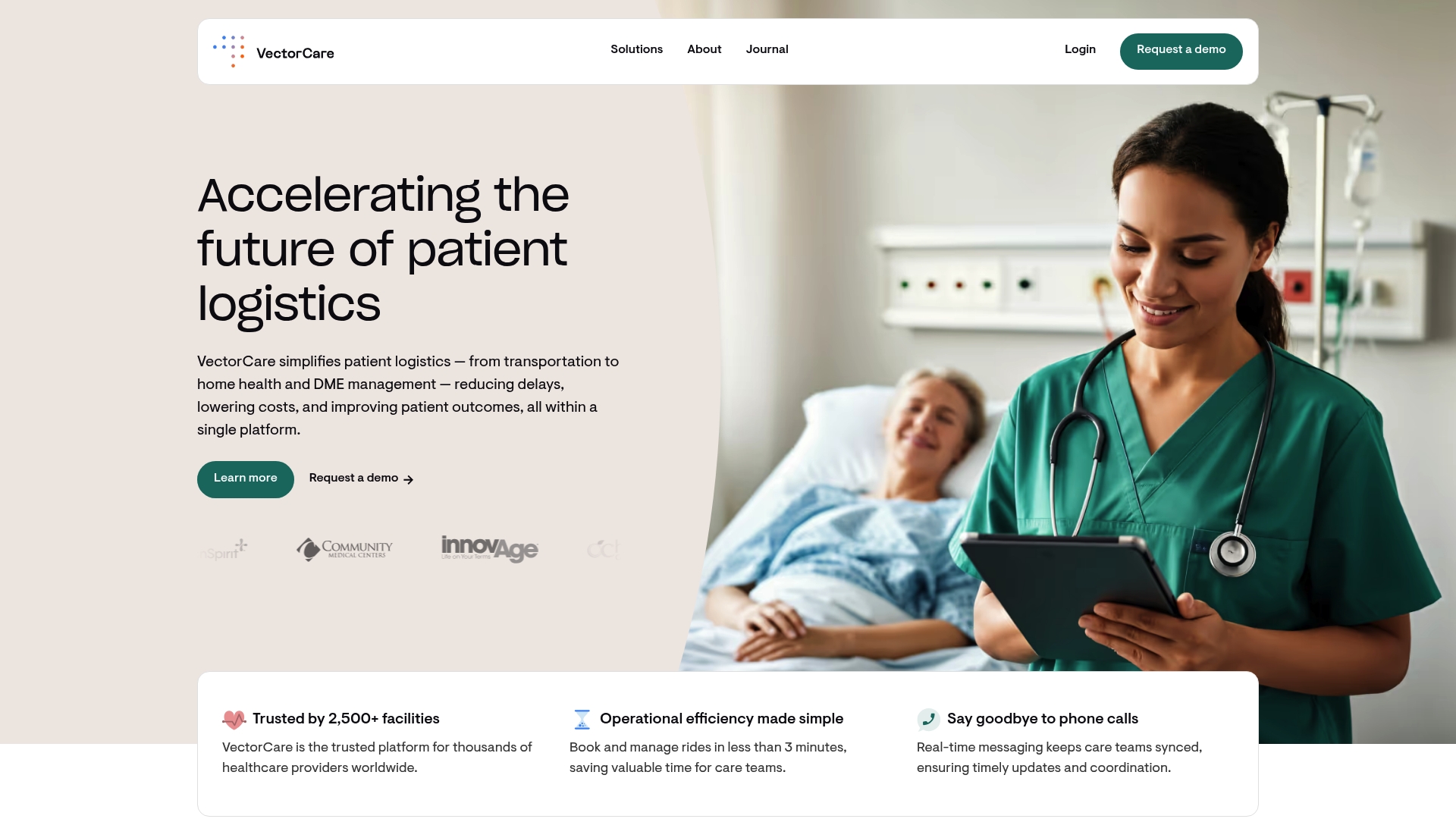
Unlock the power of a truly modern platform designed for the unique needs of healthcare logistics. VectorCare brings together scheduling optimization, secure communication, vendor management, and data-driven insights all in one place. Experience fewer delays, smarter dispatch, and improved patient outcomes. Don’t wait for inefficiency to hold you back. Explore how you can boost performance and simplify care coordination today by visiting VectorCare’s digital platform now.
Frequently Asked Questions
What types of medical transportation services are available?
Medical transportation services include emergency medical transportation (ambulance services), non-emergency medical transportation (NEMT) for routine medical appointments, and long-distance medical transport for patients requiring transportation between healthcare facilities or specialized treatments.
How do medical transportation providers ensure patient safety during transit?
Medical transportation providers prioritize patient safety by training professional medical staff, implementing strict protocols, ensuring vehicle maintenance, and optimizing routes for efficiency and safety.
What are the benefits of medical transportation for patients with mobility challenges?
Medical transportation reduces healthcare barriers by providing essential mobility solutions, improves treatment adherence by ensuring consistent medical care, and enhances patient outcomes by facilitating access to necessary medical services.
How is the future of medical transportation expected to evolve?
The future of medical transportation is expected to incorporate technological innovations such as artificial intelligence for route optimization, telemedicine connectivity for real-time health monitoring during transit, and advanced vehicle technologies, including autonomous vehicles, to improve service quality and efficiency.
